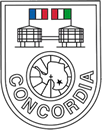ICECAMERA
PRE-REC
Precipitation Recording and Atmospheric Optics at Concordia
Contact: Massimo Del Guasta – Istituto Nazionale Ottica (INO, CNR), Via Madonna del Piano 10, 50019 Sesto Fiorentino (I), massimo.delguasta@ino.it
TROPOSPHERIC LIDAR
Le figure seguenti mostrano in falsi colori i dati raccolti in tempo reale dal LIDAR troposferico automatico INO CNR installato nello shelter FISICA (progetto PNRA PRE-REC). Il LIDAR e’ un equivalente ottico del RADAR, e consente di visualizzare particelle sospese anche di dimensioni inferiori al micron.
The false-color plots show the real-time LIDAR data collected at the “Fisica” shelter by means of the IFAC CNR LIDAR (PRE-REC PNRA project). The LIDAR is the optical equivalent of the RADAR, and makes possible the detection and ranging of precipitating ice, clouds and aerosols. The Concordia LIDAR produces a new profile every 5 minutes, with a height resolution of 7.5 meters. It operates at a wavelength of 532 nm (green ligth) from 20 to 7000 m a.g.

Nel plot 1 viene rappresentata sulle 24 ore, in falsi colori, l’intensita’ della luce laser retrodiffusa dalle diverse quote ( ordinate, scala logaritmica) in funzione del tempo UTC (ascissa). In condizioni di aria limpida i colori del plot degradano lentamente da giallo al blu al crescere della quota: si tratta della luce retrodiffusa dalle molecole d’aria. In presenza di nubi o di cristalli di ghiaccio si osservano regioni contrastanti di colore piu’ intenso. Le misure sono aggiornate regolarmente ogni 5 minuti, salvo guasti.
In the first plot the raw signal from the atmosphere is shown for the actual day as a function of UTC time (x axis) and altitude a.g. (y axis). In conditions of clean air the plot shows a boring color gradient from yellow to blue, reflecting the signal backscattered by means of the molecular atmosphere. In presence of clouds, or ice crystals, coloured structures appair.

Nel plot 2 viene rappresentata sulle 24 ore, in falsi colori, la depolarizzazione della luce laser retrodiffusa dalle diverse quote (stesse scale del plot 1). In questo plot viene evidenziata la presenza di cristalli di ghiaccio: in presenza di aria pulita o nubi di acqua liquida il colore e’ blu scuro, mentre diviene azzurro chiaro fino a rosso in presenza di cristalli di ghiaccio, anche se presenti in concentrazioni invisibili ad occhio nudo.
In the second plot the LIDAR depolarization is shown, with the same axis. Depolarization is a marker of presence of unspherical particles. Liquid droplets and pure air do not change (in the backscatter) the polarization of the incoming, linearly polarized LIDAR light. Ice particles induce a strong depolarization and this fact makes the presence of ice ( also at very low concentrations) evident in this plot. Deep blue colors show the presence of liquid aerosols and droplets, while colors from light blue to red show ice.
ICE-CAMERA
Dal 2012 un prototipo di scanner per l’osservazione della precipitazione di ghiaccio e’ operante sul tetto dello shelter “FISICA”. Ogni ora viene prodotta una fotografia a risoluzione 7 micron di una lastra di vetro su cui precipitano i grani di precipitazione. Un software di image-processing analizza i singoli grani e produce una immagine riassuntiva oraria, con i grani disposti in ordine decrescente di taglia. Dopo la scansione, i cristalli vengono sublimati riscaldando la lastra di vetro.
From 2012 a prototype of scanner for the automatic imaging of precipitation (ICE-CAMERA) is operating on the roof of the shelter “FISICA”. An image of a glass plate is obtained every hour. Precipitated particles are photographed and analyzed by means of a proper image-processing software. After the imaging, the plate is heated and crystals sublimated. An hourly image summarizing the observed crystals is also automatically produced:

